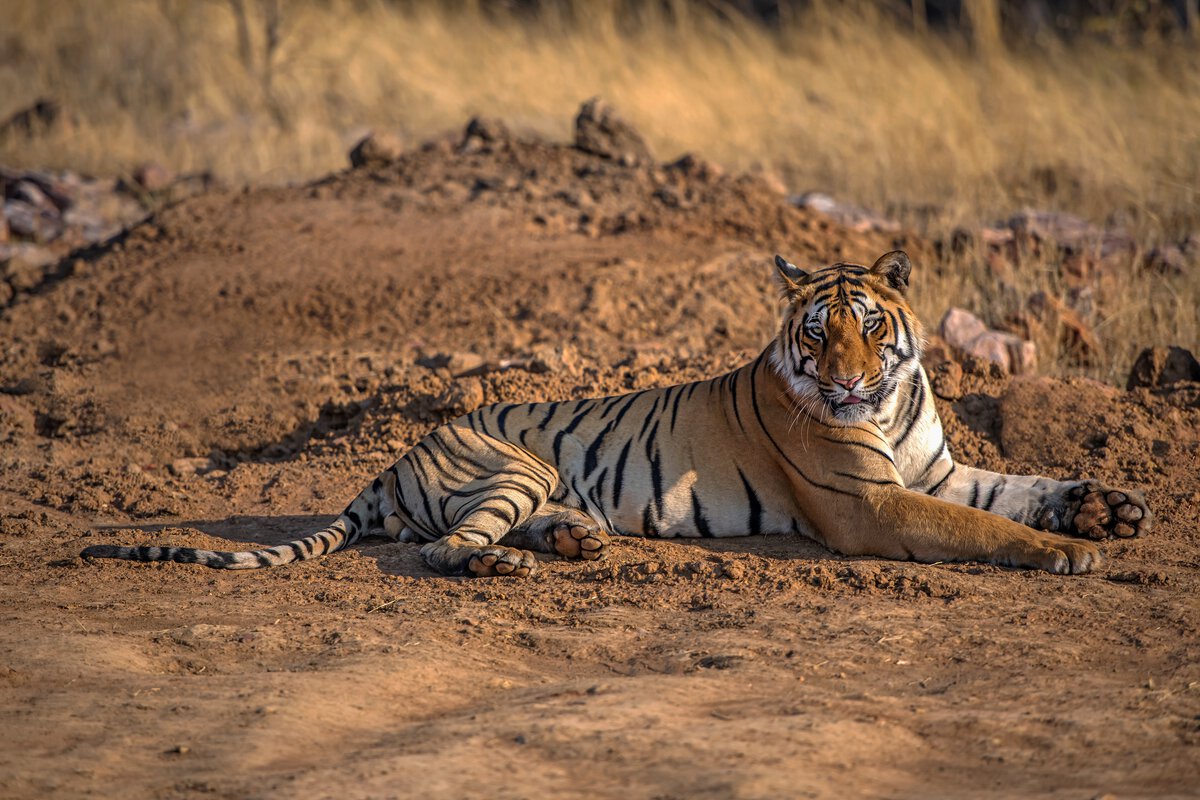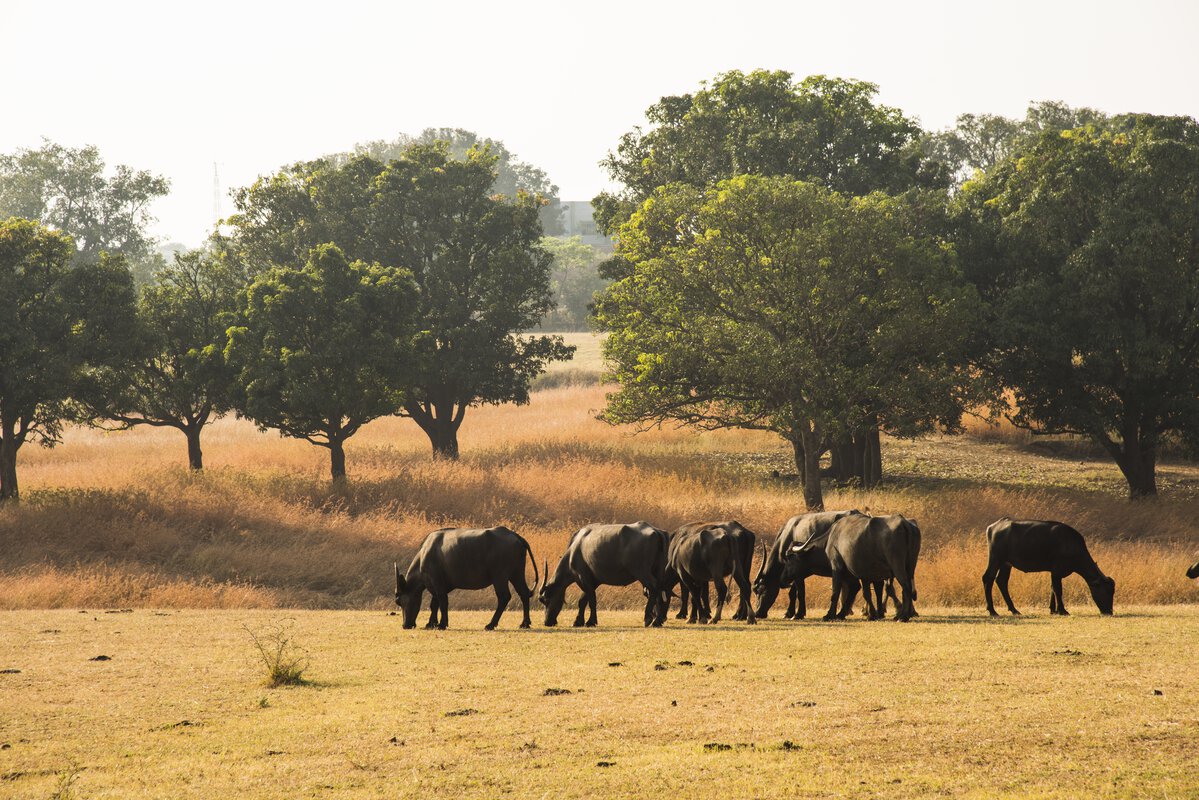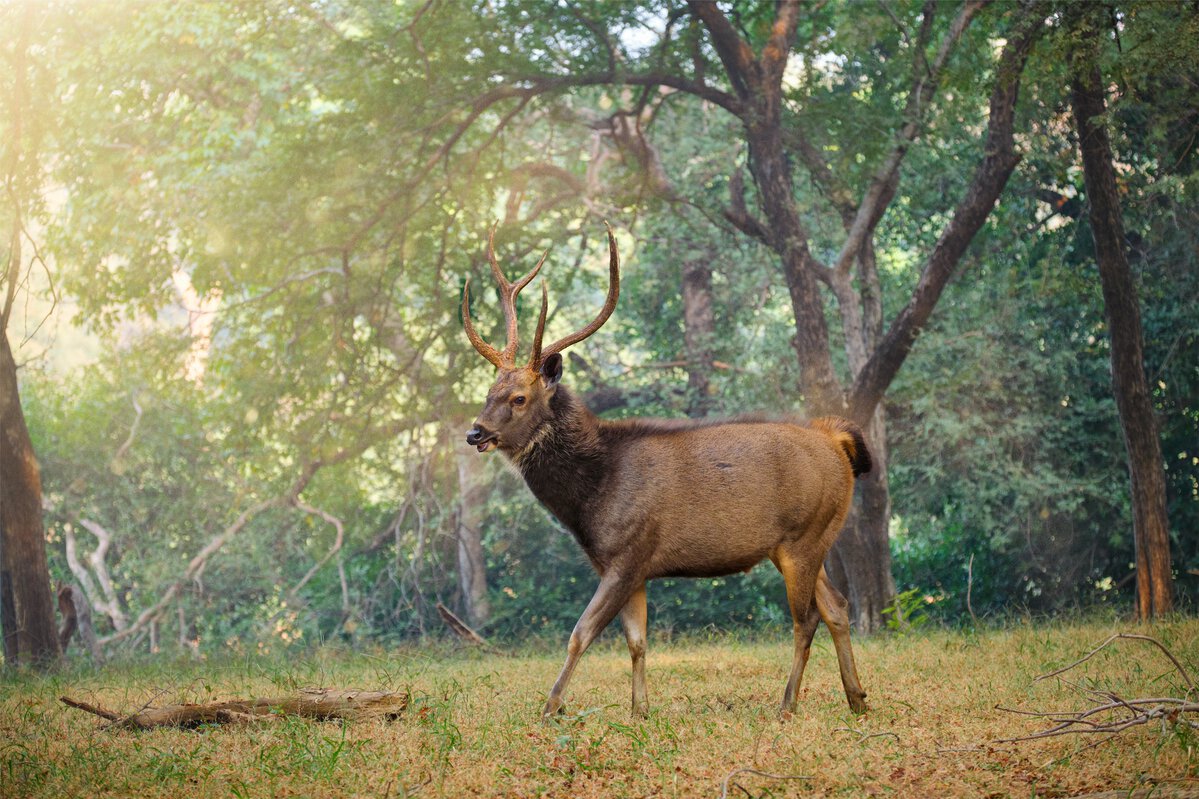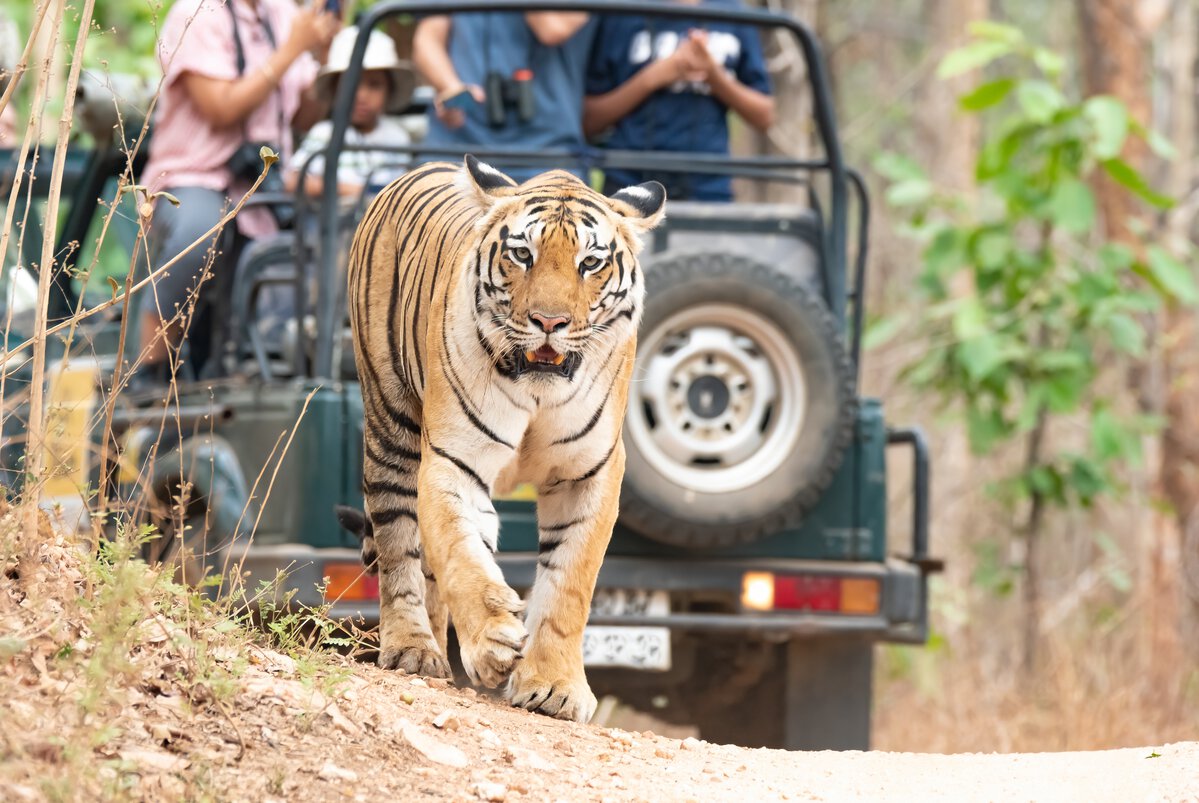September 27, 2024
National Parks in Maharashtra - A Paradise for Wildlife Enthusiasts
CM Content Team


View all
140+
Resorts
September 27, 2024
CM Content Team
Maharashtra is a treasure trove of natural beauty and biodiversity, boasting some of India's most remarkable protected areas. The national parks in Maharashtra are not only vital for conserving the rich wildlife in Maharashtra but also offer unparalleled opportunities for nature enthusiasts to explore the state's diverse landscapes. Whether you're an avid wildlife photographer or simply looking to immerse yourself in the tranquillity of nature, these national parks provide the perfect setting for unforgettable experiences.

Tadoba-Andhari Tiger Reserve, often referred to as the "Jewel of Vidarbha," is one of the most renowned national parks in Maharashtra. As the state's oldest and largest national park, Tadoba is a significant stronghold for wildlife in Maharashtra, especially for the majestic Bengal tiger. Spanning over 1,700 square kilometres, the reserve is a blend of dense forests, rolling hills, and serene lakes, creating a thriving ecosystem that supports a diverse array of flora and fauna.
The reserve is home to an impressive variety of wildlife, including leopards, sloth bears, Indian bison (gaur), and a rich assortment of bird species, making it a paradise for wildlife enthusiasts and photographers. Tadoba's dense forests and bamboo thickets offer a natural habitat where these species can thrive, contributing to the conservation of wildlife in Maharashtra. Whether you're tracking tigers on a thrilling safari or enjoying the tranquil beauty of Tadoba Lake, this reserve promises an unforgettable experience in the heart of nature.
Establishment of Tadoba-Andhari Tiger Reserve:
Tadoba-Andhari Tiger Reserve was established in 1955 as a national park, making it one of the oldest protected areas in Maharashtra. In 1995, the Andhari Wildlife Sanctuary was merged with the park to form the Tadoba-Andhari Tiger Reserve, significantly expanding its area and enhancing its role in the conservation of wildlife in Maharashtra.
Area of Tadoba-Andhari Tiger Reserve: Tadoba-Andhari Tiger Reserve spans an impressive area of 625.4 square kilometres.
Location: Tadoba-Andhari Tiger Reserve is located in the Chandrapur district of Maharashtra.
Timings: 6:00 AM - 6:00 PM
Entry Fees:
Best Time to Visit Tadoba-Andhari Tiger Reserve:
The best time to visit Tadoba-Andhari Tiger Reserve is between October and March. During these months, the weather is cooler and more comfortable for exploring the park.
Nearby attractions:
While visiting Tadoba-Andhari Tiger Reserve, you can explore several nearby attractions, including the historic Mahakali Temple in Chandrapur, the social work centre Anandwan, the serene Bhamragarh Wildlife Sanctuary, the lush Nagzira Wildlife Sanctuary, and the spiritual Ramdegi Temple.
How to reach Tadoba-Andhari Tiger Reserve:

Sanjay Gandhi National Park, located in the bustling city of Mumbai, is a unique blend of urban and natural environments, making it one of the most visited national parks in Maharashtra. Covering an area of approximately 87 square kilometres, this park serves as a vital green lung for the city, providing a much-needed escape into nature for Mumbai’s residents and visitors alike.
Despite its proximity to a major metropolitan area, Sanjay Gandhi National Park is home to a surprisingly diverse range of wildlife in Maharashtra. The park boasts a rich ecosystem that includes species such as leopards, spotted deer, and various bird species, as well as a large population of macaques. The park is also famous for the ancient Kanheri Caves, a series of rock-cut monuments dating back to the 1st century BCE, which adds a historical dimension to the natural beauty of the area.
Establishment of Sanjay Gandhi National Park:
Sanjay Gandhi National Park was established in 1969, though its roots go back to 1942 when it was originally declared as Borivali National Park. The park was later renamed in honour of Sanjay Gandhi, a prominent Indian politician. Over the years, the park has grown in significance, serving as a critical green space that protects wildlife in Maharashtra and provides recreational opportunities for the residents of Mumbai.
Area of Sanjay Gandhi National Park:
Sanjay Gandhi National Park covers an area of approximately 87 square kilometres. Despite being one of the smaller national parks in Maharashtra, it plays a crucial role in conserving the region's biodiversity and providing a natural habitat for various species.
Location: Sanjay Gandhi National Park is located in the northern part of Mumbai, Maharashtra. The park's main entrance is in the suburb of Borivali, making it easily accessible from various parts of the city.
Timings: 8:00 AM - 6:00 PM
Entry Fees: The entry fee for Sanjay Gandhi National Park is ₹85 for adults and ₹45 for kids.
Best Time to Visit Sanjay Gandhi National Park:
The best time to visit Sanjay Gandhi National Park is between August and March.
Nearby attractions:
While exploring Sanjay Gandhi National Park, you can also visit several nearby attractions These include the ancient Kanheri Caves within the park, the scenic Powai Lake, the serene Global Vipassana Pagoda, the bustling Borivali Market, and the vibrant EsselWorld amusement park.
How to reach Sanjay Gandhi National Park:
Sanjay Gandhi National Park is conveniently located in Mumbai, making it easily accessible by various modes of transportation:

Nestled in the lush landscapes of the Gondia district, Navegaon National Park is a pristine haven for wildlife in Maharashtra. Spanning over 133.78 square kilometres, this park is part of the renowned Navegaon-Nagzira Tiger Reserve, making it a key destination for nature enthusiasts and wildlife lovers. With its diverse flora and fauna, including tigers, leopards, and over 200 species of birds, Navegaon National Park offers an unforgettable experience for those seeking to explore the rich biodiversity of Maharashtra.
Establishment of Navegaon National Park:
Navegaon National Park was established in 1975 to protect the diverse flora and fauna of the region and to preserve the natural ecosystem of the area. The park was originally part of a larger forested region that served as a crucial habitat for various species of wildlife. The establishment of the park was aimed at conserving the rich biodiversity, including endangered species like tigers, leopards, and Indian gaurs, while also promoting ecotourism and raising awareness about wildlife conservation in Maharashtra.
Area of Sanjay Navegaon National Park:
Navegaon National Park covers an area of 133.78 square kilometres, offering a compact yet diverse ecosystem for a variety of wildlife and plant species in Maharashtra.
Location: Navegaon National Park is located in the Gondia district of Maharashtra, in the central-eastern part of the state. The park is situated approximately 130 kilometres from the city of Nagpur.
Timings: 5:00 AM - 7:00 PM
Entry Fees:
The admission fees for Navegaon National Park are as follows:
Best Time to Visit Navegaon National Park:
The best to visit Navegaon National Park is in the winter months of November to February.
Nearby attractions:
Nearby attractions to Navegaon National Park include the beautiful Navegaon Lake, perfect for boating and bird watching, the ancient Itiadoh Dam, which offers stunning views, and the Nagzira Wildlife Sanctuary, another rich biodiversity hotspot just a short drive away.
How to reach Navegaon National Park:

Chandoli National Park, nestled in the Western Ghats of Maharashtra, is a hidden gem for wildlife enthusiasts. Spanning over 317 square kilometres, this park is part of the Sahyadri Tiger Reserve and is renowned for its rich biodiversity. Home to a variety of wildlife, including tigers, leopards, and Indian bison, Chandoli offers a tranquil retreat into nature. The park's lush landscapes, cascading waterfalls, and dense forests make it a must-visit destination for those seeking to explore the diverse wildlife in Maharashtra.
Establishment of Chandoli National Park:
Chandoli National Park was established in 2004, primarily to protect the rich biodiversity of the Western Ghats and to serve as a sanctuary for various endangered species, including tigers and leopards. Initially declared a wildlife sanctuary in 1985, it was later upgraded to national park status.
Area of Chandoli National Park:
Chandoli National Park covers an area of 317.67 square kilometres, making it a significant part of the Western Ghats' biodiversity and a vital region for wildlife conservation in Maharashtra.
Location: Chandoli National Park is located in the Sahyadri Range of the Western Ghats, spread across the districts of Sangli, Satara, Kolhapur, and Ratnagiri in Maharashtra.
Timings: 6 AM to 6 PM
Entry Fees: The entry fees for Chandoli National Park are INR 30 per person, with an additional charge of INR 150 for each gypsy or private vehicle.
Best Time to Visit Chandoli National Park:
The best time to visit the park is between October and February.
Nearby attractions:
Nearby attractions to Chandoli National Park include the scenic Koyna Dam, a UNESCO World Heritage Site known for its stunning views and importance as a water reservoir; the historic Panhala Fort, offering a glimpse into the region's rich past; and the serene Thoseghar Waterfalls, a popular spot for nature lovers and trekkers.
How to reach Chandoli National Park:

Gugamal National Park, located in the Melghat region of Maharashtra, is a vital part of the Melghat Tiger Reserve and one of the most pristine wildlife sanctuaries in Maharashtra. Established in 1974, this park spans a vast area of dense forests and rugged terrains, providing a safe haven for a variety of wildlife in Maharashtra, including the elusive Bengal tiger, leopards, sloth bears, and several species of deer. The park is also home to a rich diversity of birdlife, making it a paradise for birdwatchers. Gugamal National Park stands out as a premier destination for nature enthusiasts seeking to explore the untouched wilderness of Maharashtra.
Establishment of Gugamal National Park:
Gugamal National Park, established in 1974, is recognized as one of the best wildlife sanctuaries in Maharashtra. Located within the Melghat Tiger Reserve, the park was created to safeguard the region's unique biodiversity, particularly focusing on the conservation of the Bengal tiger and other endangered species. Its establishment marked a significant milestone in protecting the rich flora and fauna of the Satpura Range, solidifying its reputation as a premier destination for wildlife enthusiasts in Maharashtra.
Area of Gugamal National Park:
Gugamal National Park covers an expansive area of 1673.93 square kilometres, making it one of the largest and most significant wildlife sanctuaries in Maharashtra.
Location: Gugamal National Park is located in the Melghat region of the Amravati district in the state of Maharashtra. Situated in the northern part of the state, the park lies within the Satpura Range of the Central Indian Highlands.
Timings: 6 AM to 6 PM
Entry Fees:
The entry fees for Gugamal National Park are as follows:
Best Time to Visit Gugamal National Park:
The best time to visit Gugamal National Park is between October and June, when the weather is most favourable for exploring the park's rich biodiversity and enjoying wildlife sightings.
Nearby attractions:
Nearby attractions to Gugamal National Park include the scenic Chikhaldara Hill Station, known for its breathtaking views and coffee plantations, the historic Gawilgarh Fort, offering a glimpse into the region's past, and the Melghat Tiger Reserve, which provides additional opportunities for wildlife spotting and nature trails.
How to reach Gugamal National Park:

Pench National Park, straddling the border of Maharashtra and Madhya Pradesh, is one of the most celebrated national parks in Maharashtra. Covering a portion of the Pench Tiger Reserve, this park is renowned for its rich wildlife, including the majestic Bengal tiger, leopards, and a variety of herbivores like deer and gaur. The park’s dense forests and the scenic Pench River create a thriving ecosystem that inspired Rudyard Kipling’s famous work, "The Jungle Book." Pench National Park is a must-visit for anyone looking to explore the vibrant wildlife and natural beauty that Maharashtra has to offer.
Establishment of Pench National Park:
Pench National Park was established in 1975 as a wildlife sanctuary and was later designated as a national park in 1983 to provide stronger protection for its diverse flora and fauna.
Area of Pench National Park:
Pench National Park covers an area of 758 square kilometres (293 square miles), providing a vast and diverse habitat for its rich array of wildlife, including the Bengal tiger and numerous other species.
Location: Pench National Park is located in the Seoni and Chhindwara districts of Madhya Pradesh and extends into the Nagpur district of Maharashtra.
Timings: 6 AM to 6 PM
Entry Fees:
The entry fee for Pench National Park is typically around INR 180 to INR 280 for Indian nationals and INR 500 to INR 1500 for foreign visitors, depending on the zone. Additionally, vehicle charges range from INR 600 to INR 2000. It's best to check the latest rates before your visit.
Best Time to Visit Pench National Park:
The best time to visit Pench National Park is during November, December, January, and February, when the weather is pleasant and wildlife sightings are at their peak.
Nearby attractions:
Nearby attractions to Pench National Park include the picturesque Totladoh Dam, which offers stunning views and opportunities for bird watching, the Pench River, perfect for serene nature walks and exploring the lush surroundings, and the nearby village of Kohka, where visitors can experience local culture and traditions.
How to reach Pench National Park:
The national parks in Maharashtra offer an unparalleled opportunity to connect with nature and experience the region's rich biodiversity. Whether you're a wildlife enthusiast, a nature lover, or simply looking to escape the hustle and bustle, these parks provide the perfect backdrop for an unforgettable adventure.
If you're planning a trip to Maharashtra to explore the national parks, you can stay at these Club Mahindra resort for a comfortable and convenient base as you explore the region's natural beauty.
These resorts offer both comfort and convenience, making them perfect bases for your national park explorations. Plus, with a Club Mahindra membership, you not only have access to these resorts in Maharashtra but also to over 140+ resorts worldwide, ensuring a seamless and enjoyable vacation experience.
Mahindra Holidays & Resorts India Ltd. (MHRIL), a part of Leisure and Hospitality sector of the Mahindra Group, offers quality family holidays primarily through vacation ownership memberships and brings to the industry values such as reliability, trust and customer satisfaction. Started in 1996, the company's flagship brand ‘Club Mahindra’, today has over 300,000 members , who can holiday at 140+ resorts in India and abroad.
We use cookies to personalise content and to provide you with an improved user experience.By Continuing to browse this site you consent to the use of cookies.Please visit our cookie policy for further details.

Welcome to ClubMahindra.com In order to provide a personalised experience for you, we use cookies to enable some website functionality. Cookies help us see which articles most interest you; allow you to easily share articles on social media channels; permit us to deliver content personalised to your interests and locations; along with many other site benefits. For more information, please review our Cookie Policy
When you visit any website, it may store or retrieve information on your browser, mostly in the form of cookies. This information might be about you, your preferences or your device and is mostly used to make the site work as you expect it to. The information does not usually directly identify you, but it can give you a more personalized web experience. Because we respect your right to privacy, you can choose not to allow some types of cookies. Click on the different category headings to find out more and change our default settings. However, blocking some types of cookies may impact your experience of the site and the services we are able to offer.
Because we respect your right to privacy, you can choose not to allow some types of cookies and you have the right to withdraw your consent by send a mail to email id [email protected]
These cookies are essential in order to enable you to move around the site and use its features, such as accessing secure areas of the site. Without these cookies, services you have asked for cannot be provided.
These cookies allow us to employ data analytics so we can measure and improve the performance of our site and provide more relevant content to you. These cookies don't collect information that identifies a visitor down to an individual level that is available to us. These cookies are not passing personally identifiable information to any external third party other than in limited cases when we engage a service provider to act on our behalf but who is then unable to use the data for their own purposes.
Performance cookies are generally third-party cookies from vendors we work with or who work on our behalf that collect information about your visit and use of the Club Mahindra website, for instance which pages you visit the most often, and if you get error messages from web pages. These cookies don't collect information that identifies a visitor. All information these cookies collect is anonymous and is only used to improve your overall experience on how the website works. Third party vendors may have access to this data and may use it to improve their overall services and offerings.
Functionality cookies allow a site to remember choices you make (such as your user name, language or the region you are in) and provide more enhanced, personal features. These cookies cannot track your browsing activity on other websites. They don't gather any information about you that could be used for advertising or remembering where you've been on the Internet outside our site.
Third-party advertising and social media cookies are used to (1) deliver advertisements more relevant to you and your interests; (2) limit the number of times you see an advertisement; (3) help measure the effectiveness of the advertising campaign; and (4) understand people's behaviour after they view an advertisement. They are usually placed on behalf of advertising networks with the site operator's permission. They remember that you have visited a site and quite often they will be linked to site functionality provided by the other organization. This may impact the content and messages you see on other websites you visit. If you do not allow these cookies you may not be able to use or see certain these sharing tools content on our website.